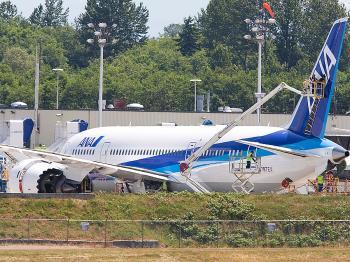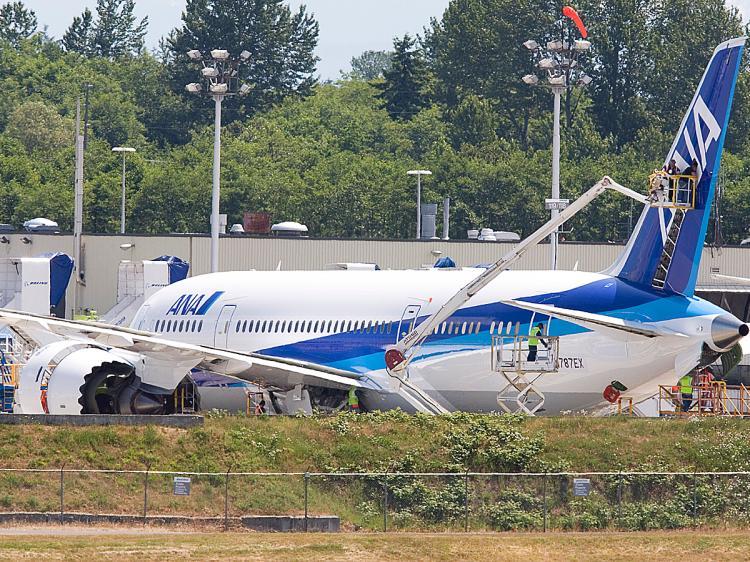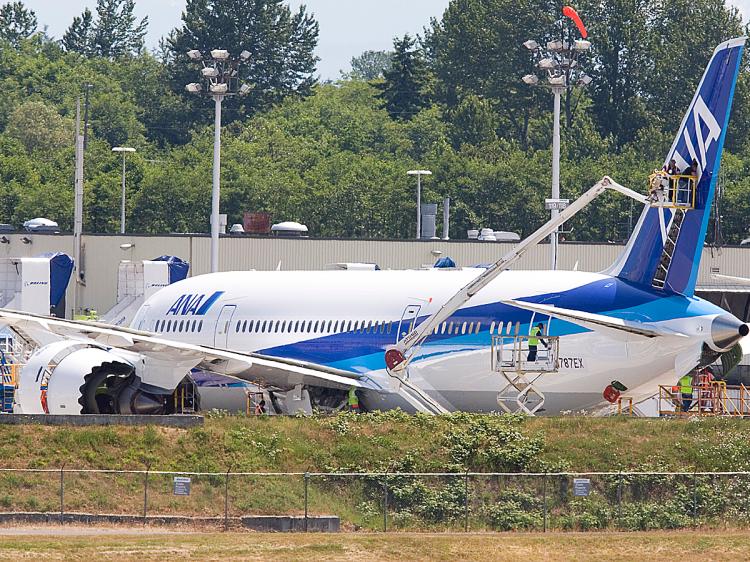WASHINGTON—After over a year of cutting capacity and holding back plane orders, the global airline industry—though still very much suffering from the recession—is showing faint signs of recovery.
The bad news is that for most airlines, bottom lines are still hurting. As a whole, the industry carried 6 percent fewer passengers in August and earned 25 percent less revenue from passenger traffic compared to the same month in 2008, according to a recent Air Transport Association (ATA) report.
Unemployment, income reductions, budget constraints, high consumer debt, and a weak economy have hampered consumers’ ability to travel for leisure. Many companies also have cut back on corporate and business travel during the recession.
“The industry continues to see a reduction in the number of air travelers, despite double-digit declines in fares,” said James C. May, president and CEO of ATA, in a statement. “While there are signs that improvement may be on the horizon, regrettably the demand for air travel remains weak.”
“U.S. scheduled passenger airlines employed 6.3 percent fewer workers in June 2009 than in June 2008, the 12th consecutive decrease in full-time equivalent employee (FTE) levels for the scheduled passenger carriers from the same month of the previous year,” according to the latest Bureau of Transportation Statistics (BTS) report.
The reduction in workforce was apparent across small and large airlines, such as AirTran Airways, Air Wisconsin Airlines Corp., and PSA Airlines, according to a recent U.S. Department of Transportation press release.
As of Oct. 1, American Airlines, a subsidiary of AMR Corp., will fly with 921 fewer flight attendants for at least two months. Of the 921 affected attendants, 228 will be laid off permanently and 224 are furloughed for two months. Overall, the job cuts were still not as grave as originally feared.
“What was going to be 1,200 jobs lost has been limited to 228. While it breaks my heart to see any of our flight attendants put on the street, even saving one job was well worth the effort and time. You can be sure we will not rest until all furloughed American Airlines Flight Attendants are back to work,” The Association of Professional Flight Attendants (APFA) said in a statement.
Fitch threw caution to the wind along with its prediction.
“It is clear that the U.S. industry remains fragile and highly sensitive to changes in air travel, demand, and the price of jet fuel,” Fitch said.
“While no snap-back in air travel demand or yields appears likely in the near term, a moderation of passenger unit revenue declines during the third quarter suggests that modest improvement in industry profit margins … is more likely,” the firm continued.
Most airlines survived the recession by cutting the number of flights, discounting fares, increasing seat capacity by cramming more seats into airplanes, charging for food available on certain flights, among other measures. All told, airlines as a whole initiated cost saving measures and tightened budgets. Fitch suggested that the industry has taken “critical steps” to deal effectively with reduced demand.
Jet fuel price contractions gave global airlines more breathing room, although in summer 2009, fuel prices edged up slightly. AMR Corp., Delta Airlines, US Airways Group, and others also shored up their financials through raising capital.
Delta Airlines Inc. was downgraded by Fitch to a B- from a B in default rating. Another downgrade would only be considered if the economy worsens and customer demand decreases significantly.
Fitch finds Delta in a better position than many of its peers who may file for bankruptcy long before such an event would materialize for Delta. If the economy continues to improve into 2010, Delta would find it much easier to borrow in the market, cover continued costs, and return to a “stable outlook,” according to Fitch.
Discount carrier JetBlue Airways Corp.’s outlook hinges on jet fuel oil prices not rising above $2.00 per gallon, corporations returning to its pre-recession flight bookings for their employees, and individuals leaving the car behind and purchasing the company’s no-frills tickets.
But the travel industry believes that cutting travel expenses may be shortsighted—corporations should look at business travel as an investment instead of an expense that takes away from the profitability of the firm, some industry groups argue.
A close correlation exists between business travel and a firm’s earnings, suggests a National Business Travel Association (NBTA) study.
Business travel is highly beneficial for manufacturing firms and service providers, the study argues. Consulting firms and contractors’ fortunes are strongly tied to travel.
“Our analysis demonstrates a clear link between business travel expenditures, corporate sales, and consequently, corporate profits. Our findings also indicate that these linkages vary from industry to industry. Across all industries, the average incremental return on investment was roughly $15 for every $1 spent on business travel,” the NBTA said.
The bad news is that for most airlines, bottom lines are still hurting. As a whole, the industry carried 6 percent fewer passengers in August and earned 25 percent less revenue from passenger traffic compared to the same month in 2008, according to a recent Air Transport Association (ATA) report.
Unemployment, income reductions, budget constraints, high consumer debt, and a weak economy have hampered consumers’ ability to travel for leisure. Many companies also have cut back on corporate and business travel during the recession.
“The industry continues to see a reduction in the number of air travelers, despite double-digit declines in fares,” said James C. May, president and CEO of ATA, in a statement. “While there are signs that improvement may be on the horizon, regrettably the demand for air travel remains weak.”
Playing Havoc With Jobs
The crisis in the airline industry has also hurt pilots, flight attendants, and other flight support staff.“U.S. scheduled passenger airlines employed 6.3 percent fewer workers in June 2009 than in June 2008, the 12th consecutive decrease in full-time equivalent employee (FTE) levels for the scheduled passenger carriers from the same month of the previous year,” according to the latest Bureau of Transportation Statistics (BTS) report.
The reduction in workforce was apparent across small and large airlines, such as AirTran Airways, Air Wisconsin Airlines Corp., and PSA Airlines, according to a recent U.S. Department of Transportation press release.
As of Oct. 1, American Airlines, a subsidiary of AMR Corp., will fly with 921 fewer flight attendants for at least two months. Of the 921 affected attendants, 228 will be laid off permanently and 224 are furloughed for two months. Overall, the job cuts were still not as grave as originally feared.
“What was going to be 1,200 jobs lost has been limited to 228. While it breaks my heart to see any of our flight attendants put on the street, even saving one job was well worth the effort and time. You can be sure we will not rest until all furloughed American Airlines Flight Attendants are back to work,” The Association of Professional Flight Attendants (APFA) said in a statement.
Fortunes Looking Up?
“The largest U.S. airlines enter the fall with growing expectations that still-tentative signs of stabilization in revenue trends over the last several weeks may pave the way for modest improvement,” Fitch Ratings said in its recent “Airline Credit Navigator (Fall 2009)” report. Fitch is a credit rating and corporate advisory firm.Fitch threw caution to the wind along with its prediction.
“It is clear that the U.S. industry remains fragile and highly sensitive to changes in air travel, demand, and the price of jet fuel,” Fitch said.
“While no snap-back in air travel demand or yields appears likely in the near term, a moderation of passenger unit revenue declines during the third quarter suggests that modest improvement in industry profit margins … is more likely,” the firm continued.
Most airlines survived the recession by cutting the number of flights, discounting fares, increasing seat capacity by cramming more seats into airplanes, charging for food available on certain flights, among other measures. All told, airlines as a whole initiated cost saving measures and tightened budgets. Fitch suggested that the industry has taken “critical steps” to deal effectively with reduced demand.
Jet fuel price contractions gave global airlines more breathing room, although in summer 2009, fuel prices edged up slightly. AMR Corp., Delta Airlines, US Airways Group, and others also shored up their financials through raising capital.
U.S. Airlines Still Not Out of the Woods
“Seasonally weak demand patterns between September and March will put continued pressure on cash flow and liquidity among all the U.S. carriers,” Fitch analysts suggest in the airline summary analysis.Delta Airlines Inc. was downgraded by Fitch to a B- from a B in default rating. Another downgrade would only be considered if the economy worsens and customer demand decreases significantly.
Fitch finds Delta in a better position than many of its peers who may file for bankruptcy long before such an event would materialize for Delta. If the economy continues to improve into 2010, Delta would find it much easier to borrow in the market, cover continued costs, and return to a “stable outlook,” according to Fitch.
Discount carrier JetBlue Airways Corp.’s outlook hinges on jet fuel oil prices not rising above $2.00 per gallon, corporations returning to its pre-recession flight bookings for their employees, and individuals leaving the car behind and purchasing the company’s no-frills tickets.
Traveling for Profits?
U.S. corporations are still in a cost-cutting mode, and travel and entertainment budgets are usually the first to be scaled back.But the travel industry believes that cutting travel expenses may be shortsighted—corporations should look at business travel as an investment instead of an expense that takes away from the profitability of the firm, some industry groups argue.
A close correlation exists between business travel and a firm’s earnings, suggests a National Business Travel Association (NBTA) study.
Business travel is highly beneficial for manufacturing firms and service providers, the study argues. Consulting firms and contractors’ fortunes are strongly tied to travel.
“Our analysis demonstrates a clear link between business travel expenditures, corporate sales, and consequently, corporate profits. Our findings also indicate that these linkages vary from industry to industry. Across all industries, the average incremental return on investment was roughly $15 for every $1 spent on business travel,” the NBTA said.






